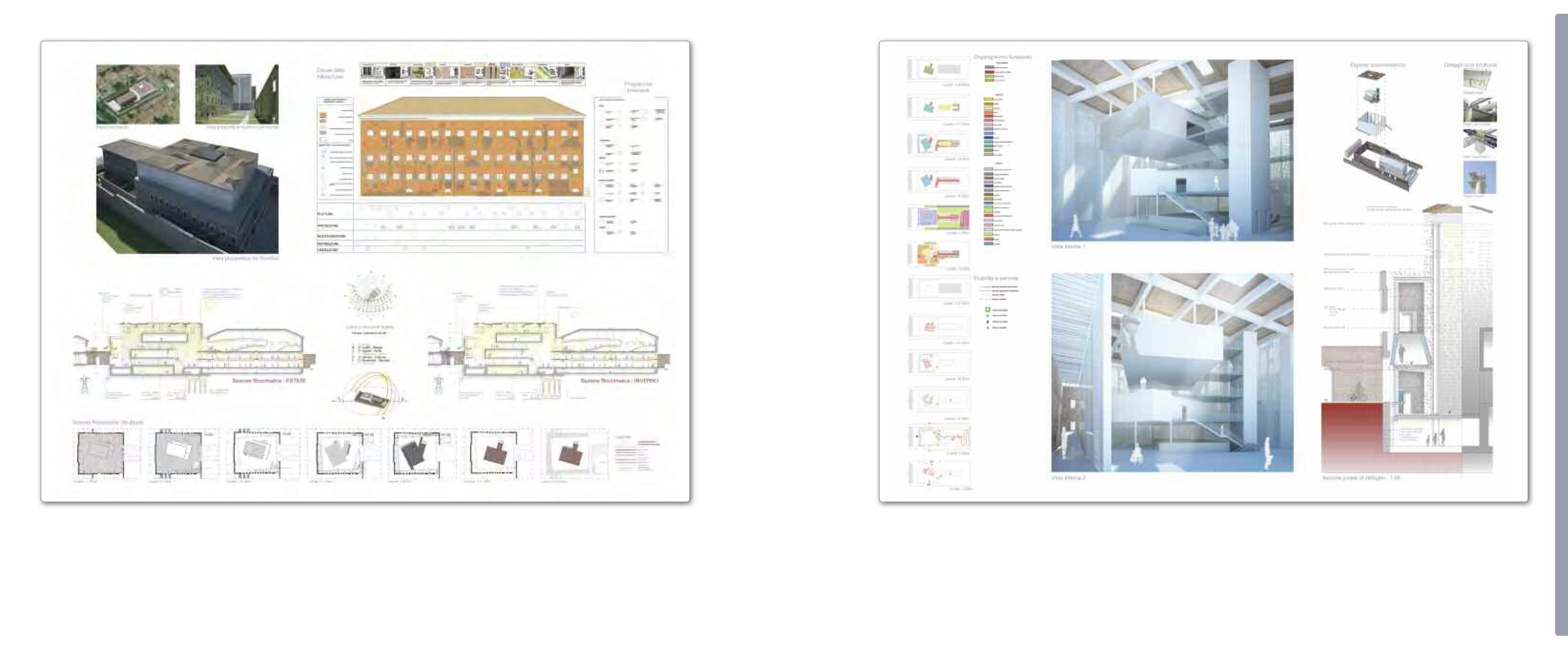
È riduttivo condensare solo attraverso la
molteplicità di forma e materia, il pensiero
che sottende un progetto. Al di là degli
strumenti tecnici disponibili, un’architet-
tura ha il dovere di condurre all’emozione
e, in un soffio di tempo, rimandare alla sin-
tesi del tutto. Un museo, etimologica-
mente, definisce il luogo sacro alle Muse,
protettrici delle arti e delle scienze. Qui, in-
vece, è costruzione educativa della cultura
ebraica e, soprattutto, incubatore della
gioia che essa trasmette liberandola nel-
l’aria al visitatore, ignaro della sua reale es-
senza. Questo è il dire poetico di Gioia del
MEIS, in un giorno di settembre del 2013:
«Dal cuore di Ferrara, arrivo zigzagando
sulla rampa di pietra, che mi racconta del
peregrinare senza sosta. Percorro la linea
retta, attraverso stanze che racchiudono
la memoria triste del braccio longitudinale
di via Piangipane, avvertendone buio e co-
strizione. Ai piani superiori, che si conclu-
dono tra magnifiche capriate lignee e spa-
zialità materiche, intuisco un nuovo volume
organico destinato alla parola e stanze
fatte di libri. Ma il mio sguardo è irretito da
un bagliore che si dilata nella profondità
che voglio raggiungere. Ora, finalmente,
sono avvolta da un vuoto reso impalpabile
dalla luce. Mi trovo nel luogo del presente.
Sono gioia. E qui, in questo spazio lumi-
noso e senza peso, tempio della scrittura
avvolto dallo srotolare parietale della Torah
shebiktav
, inizia il racconto del popolo
ebraico, delle tradizioni e della sua vita nel
tempo.»
It is simplistic to condense the ideas un-
derlying a project into choices of form and
matter. More than technical skill, architec-
ture has the duty to take a snapshot in
time and evoke an emotional response. A
museum, etymologically, is literally a space
sacred to the Muses, the protectresses of
the arts and sciences. Here, however, its role
is to educate visitors about Jewish culture in
a way that is not merely educational but
also entertaining, such that when the mu-
seum opens in one day in September 2013,
a visitor may leave thinking: “from the heart
of Ferrara, I meander along the stone
ramps, experiencing the story of a people
who wandered without rest. Retracing his-
tory, I walk through the rooms that run
parallel to via Piangipane seeing the sor-
rowful memories enclosed within them,
experiencing overwhelming darkness and
duress. On the upper floors, spacious
rooms with their high ceilings revealing
magnificent wooden trusses, I see a new
organic space designed to reveal the word
and rooms made of books. But my atten-
tion is attracted by something that glows in
the depths of where I am trying to reach.
Now, finally, I am enveloped by an empti-
ness made intangible by light. I find myself
in the present. I am joyful. And here, in this
bright and buoyant space, this temple of
writing, the Torah
shebichtav,
the Torah
that is written, scrolls on the walls, and I can
read from the beginning the history and
the traditions of the Jewish people.”


